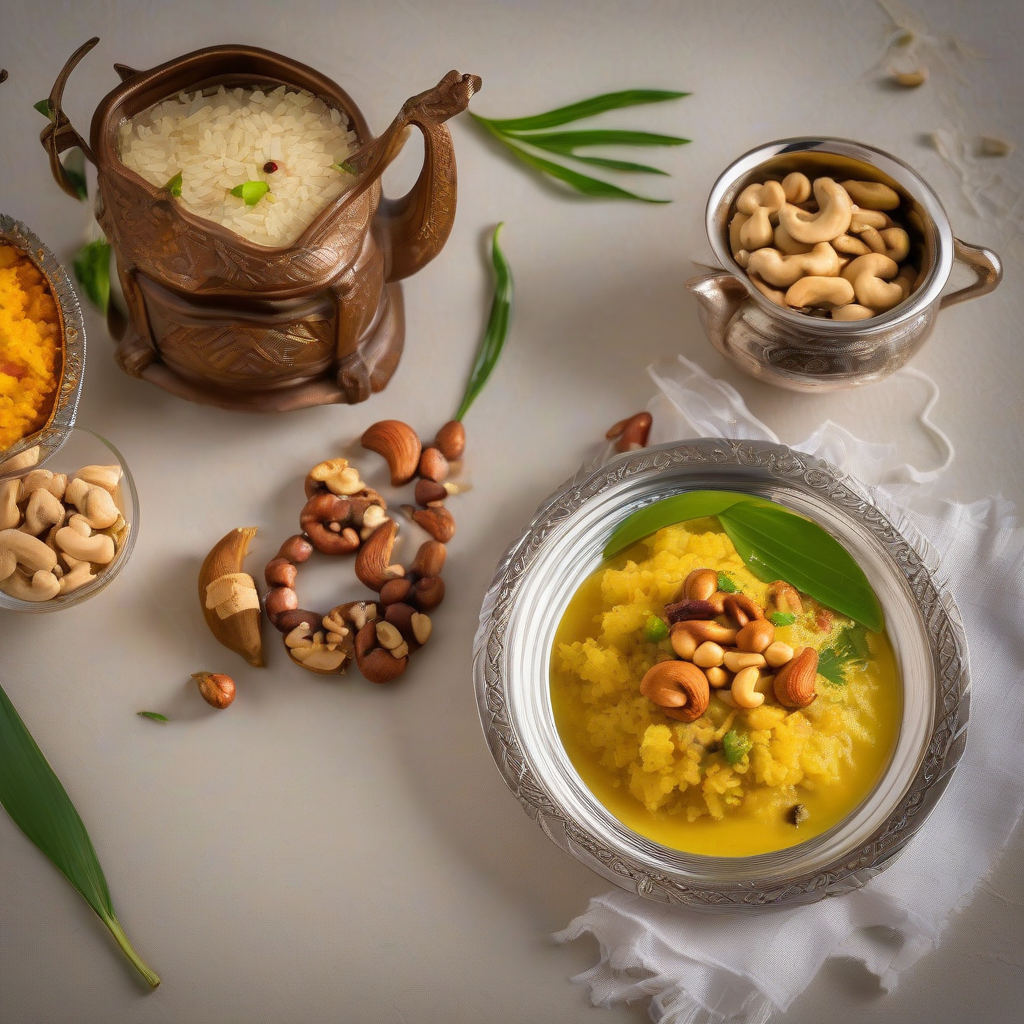Oye Hoye! Let’s Make Some Lip-Smacking Ven Pongal, Yaar!
Namaste and Vanakkam, my dear food-loving friends! Chef Curry Do’pyaza here, back in your kitchens and hearts with a recipe that’s as comforting as a warm hug on a chilly morning. Today, we’re diving headfirst into the delightful world of Ven Pongal – a savory rice and lentil dish that’s a staple in South Indian homes.
This dish is more than just food; it’s a celebration! Pongal, the harvest festival, is incomplete without a steaming pot of this goodness. We make it during Makar Sankranti too, when the sun begins its northward journey. Think of it as sunshine on a plate, perfect for those cooler months. It’s also a common offering in temples and a frequent guest at breakfast tables across Tamil Nadu.
A Little Pongal History, My Friend!
Pongal has a rich history. Some believe it dates back over 2000 years! Ancient texts mention a dish called “Venpakam,” which sounds suspiciously like our beloved Ven Pongal. Over time, it has evolved into the simple yet satisfying dish we know and love today.
Let’s Get Cooking!
Preparation Time: 10 minutes
Cooking Time: 30 minutes
Ingredients, My Darlings:
- 1/2 cup Pachai Arisi (Raw Rice) – Use a good quality short grain rice
- 1/4 cup Paasi Paruppu (Yellow Moong Dal)
- 4 cups Thanni (Water)
- 1 teaspoon Jeeragam (Cumin Seeds)
- 1 teaspoon Milagu (Black Peppercorns), coarsely crushed
- 1 inch piece Inji (Ginger), finely chopped
- 2-3 numbers of green chillies, slit lengthwise
- 1/4 cup Munthiri (Cashews)
- 2 tablespoons Ney (Ghee), plus more for serving
- 1/4 teaspoon Perungayam (Asafoetida)
- Salt to taste
Step-by-Step: Pongal Power!
- Wash and Soak: Wash the rice and moong dal together until the water runs clear. No need to soak them for too long, just a quick rinse will do.
- Cook it Up: In a pot or pressure cooker, combine the rice, dal, and water. Add a pinch of salt.
- Pressure Cooker: Cook for 3-4 whistles on medium heat. Let the pressure release naturally.
- Pot: Bring to a boil, then reduce heat to low, cover, and simmer for about 25-30 minutes, or until the rice and dal are soft and mushy. Stir occasionally to prevent sticking.
- Tadka Time! While the rice and dal are cooking, let’s prepare the tadka (tempering). In a small pan, heat ghee over medium heat.
- Spice it Right: Add cumin seeds. Once they start to splutter, add the crushed peppercorns, chopped ginger, green chillies and asafoetida. Fry for a few seconds until fragrant.
- Cashew Crunch: Add the cashews and fry until they turn golden brown. Be careful not to burn them!
- Combine and Conquer: Pour the tadka over the cooked rice and dal. Mix well. Add more ghee if you like – because, let’s be honest, who doesn’t love extra ghee?
- Simmer and Serve: Simmer for another 5 minutes, stirring occasionally, to allow the flavors to meld together beautifully.
Chef Curry’s Tips for Pongal Perfection:
- Mushy is Key: The perfect Pongal is soft and mushy. Don’t be afraid to add more water if needed to achieve the right consistency.
- Ghee is Your Friend: Don’t skimp on the ghee! It adds richness and flavor that’s simply irresistible.
- Spice it Up (or Down): Adjust the amount of pepper and green chilies to your liking. Some like it hot, some like it mild – it’s your Pongal, your rules!
- Fresh is Best: Use fresh ginger and freshly crushed peppercorns for the best flavor.
Pongal Your Way: Cooking Variations
- Gas Stove: Follow the pot method described above.
- Induction Stove: Same as gas stove, just adjust the heat settings accordingly.
- Oven: Not ideal for this recipe.
- Microwave: Not ideal for this recipe.
- Air Fryer: Not suitable for this recipe.
- Slow Cooker/Crockpot: Combine all ingredients in the slow cooker and cook on low for 4-6 hours, or until the rice and dal are soft.
- Fast Cooker: A pressure cooker is essentially a fast cooker. Follow the pressure cooker instructions above.
Pongal Power: Nutritional Information (Approximate)
(Per serving, based on the recipe above)
- Calories: 250-300
- Protein: 8-10g
- Carbohydrates: 40-45g
- Fat: 8-10g (mostly from ghee)
Serving Suggestions:
- Sambar and Coconut Chutney: The classic combination!
- Vada: Crispy lentil fritters make a great accompaniment.
- Ghee and Sugar: For those with a sweet tooth, a dollop of ghee and a sprinkle of sugar on top is pure bliss.
- Just as it is: Honestly, Pongal is so flavorful on its own, you can enjoy it without any sides!
Now It’s Your Turn!
So there you have it, my friends! A simple yet soul-satisfying recipe for Ven Pongal that’s sure to become a family favorite. Try this recipe at home, and let me know how it turns out! Share the joy and deliciousness with your friends and family. Happy cooking!
